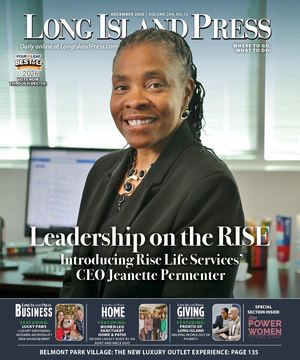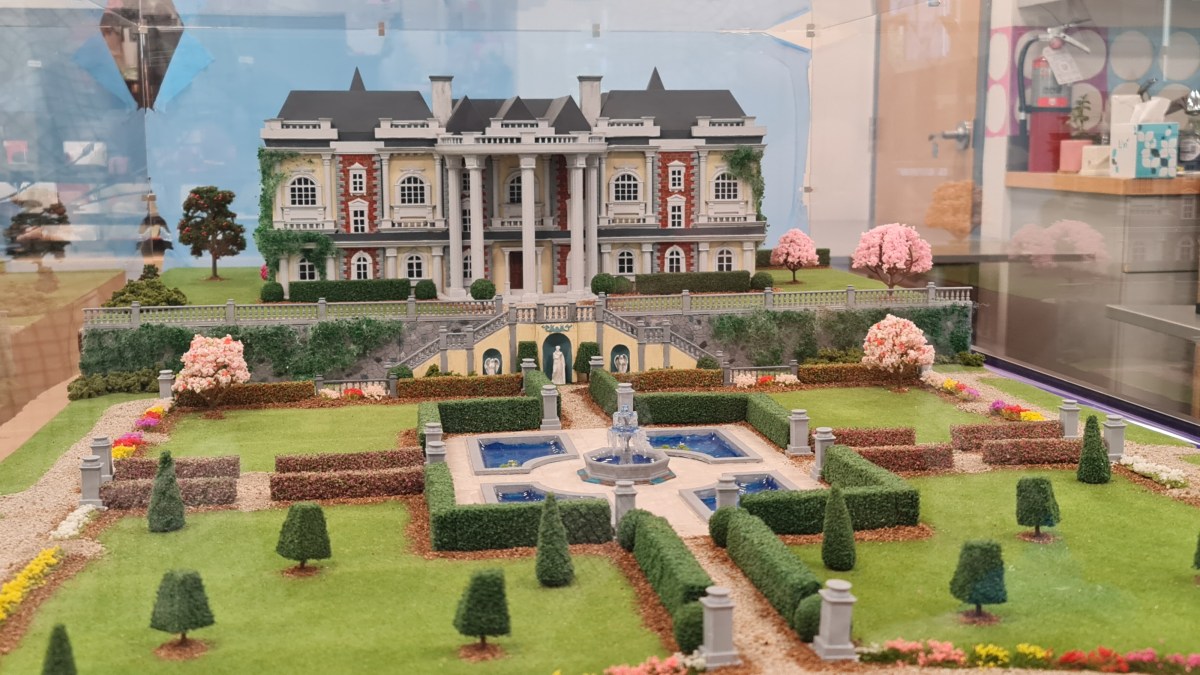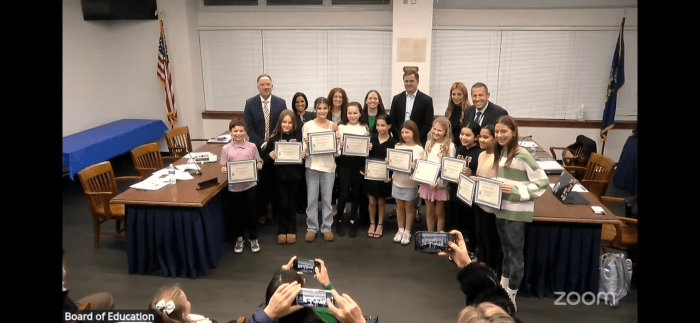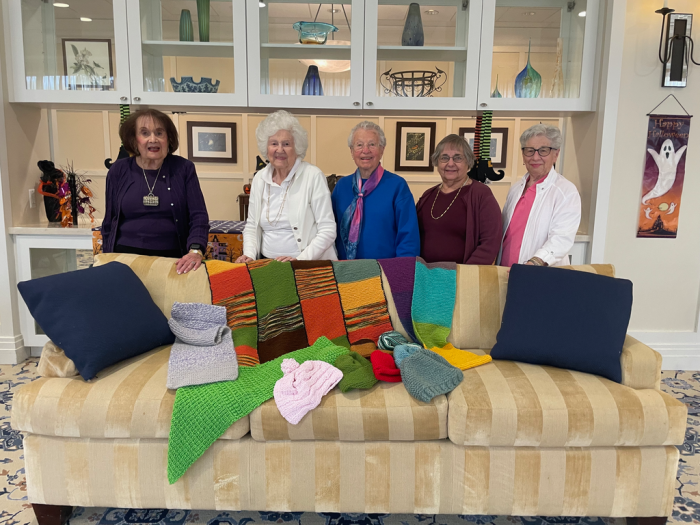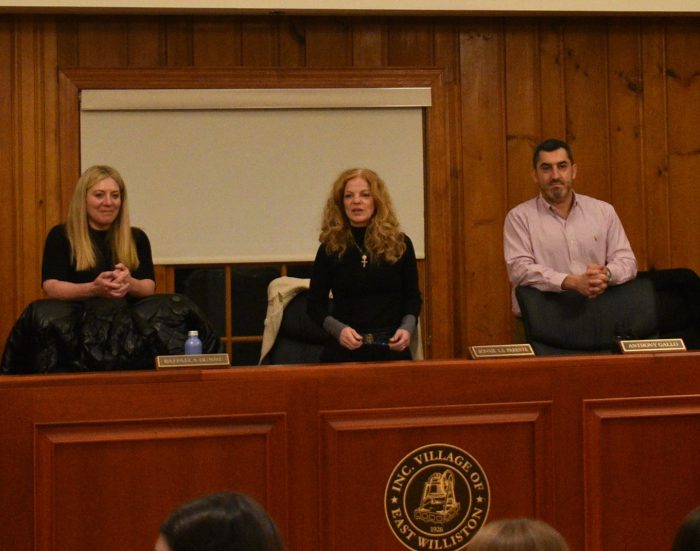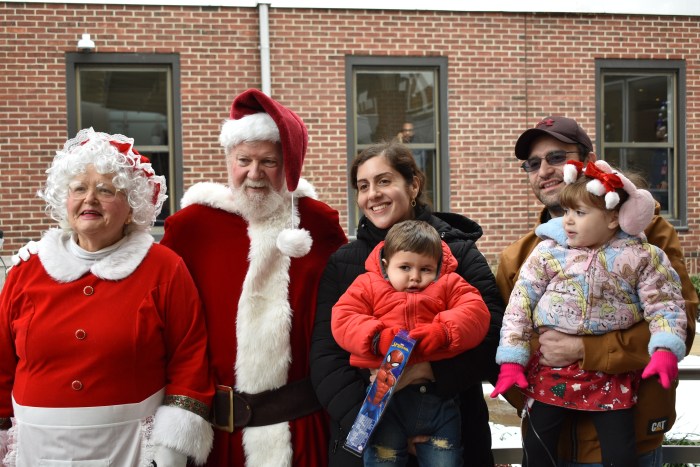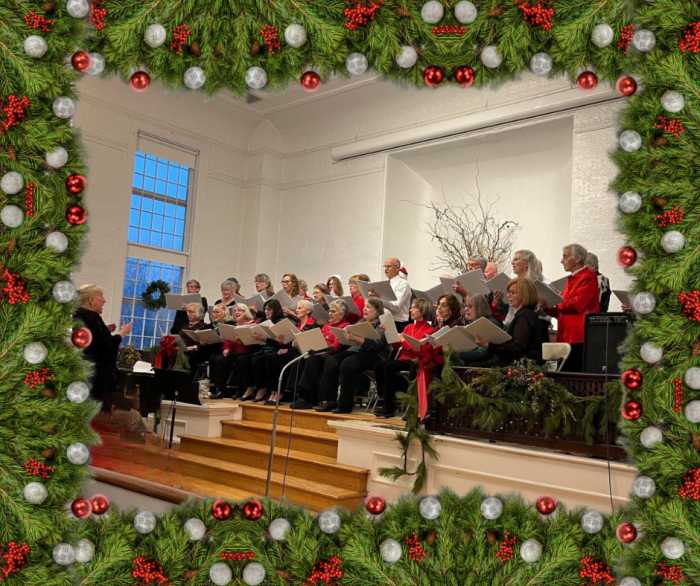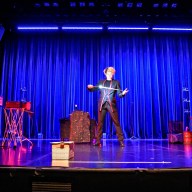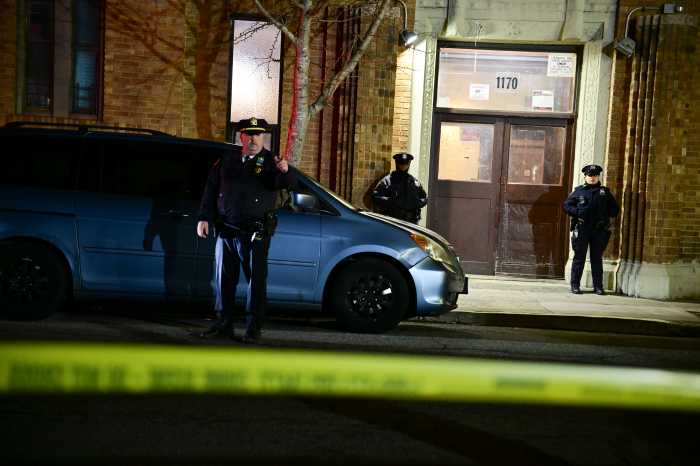In a quiet corner of the Great Neck Library, a century-old dream took shape—layer by layer, print by print—culminating in a sprawling, Gatsby-era Gold Coast mansion, now on display for the public.
Created by the library’s STEM Lab in honor of the 100th anniversary of “The Great Gatsby,” the 3D-printed model captures the elegance and mystique of F. Scott Fitzgerald’s fictional Long Island estate. The project, spearheaded by STEM department head Chris Van Wickler, was a months-long labor of creativity, engineering and homage.
“We built a table-sized miniature of what Gatsby’s mansion might have looked like if it really existed in Great Neck during the 1920s,” Van Wickler said. “It started as an idea to just model a dock with a blinking green light. Then I said,’ What if we just built a whole estate?’”
The idea was first discussed at a planning meeting in November 2024, when library staff were debating how to represent the iconic green light from the novel. Initially, the team considered printing a six-foot replica of the Stepping Stones Lighthouse, a local beacon long speculated to have inspired Fitzgerald.
“The lighthouse strays from the idea that the green light is coming from the end of Daisy’s dock,” Van Wickler said. “So we pivoted. I asked, ‘How big could we make the dock?’ And my brain just kept going—reeds, water, a boat, a path… and eventually, the mansion.”
Van Wickler received approval to proceed, and the STEM Lab team got to work. That team included senior emerging technologies librarian Aimeng Li, emerging tech trainee Trudy Delaney, and library shelver John Nemeth. Together, they tackled what would become a 70-hour 3D print job and an estimated 400 hours of manual labor to assemble, paint, and detail the final product.
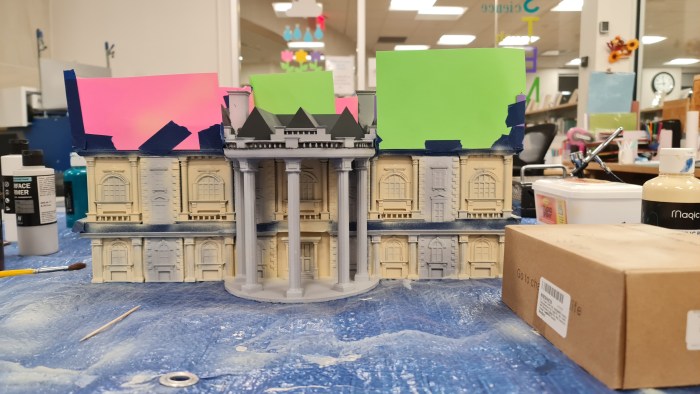
Li led the digital modeling process.
“We started with an open-source file that was designed for video games, not for printing,” Van Wickler said. “Aimeng spent all of January cleaning it up, fixing the geometry, making it printable and adding features specific to Long Island’s Gold Coast architecture.”
Those details were inspired by real-life mansions such as Old Westbury Gardens, Oheka Castle and the long-lost Broadlawns estate. While purists may point out inconsistencies with Fitzgerald’s text, Van Wickler insists the intention wasn’t replication—it was homage.
“You can’t make it accurate to the book or to real life,” he said. “The novel is vague on specifics. Gatsby himself is larger than life. So we made a mansion that feels like it belongs on the Gold Coast in 1925, with artistic license.”

Some of that license sparked debate-especially over the absence of a swimming pool.
“People have been asking, ‘Where’s the pool?’” Van Wickler said. “But most pools back then were indoor or set off to the side. Ours would be off to the left, down one of the garden paths, not visible from the central vista.”
The model was built with a wide range of materials beyond PLA filament (thermoplastic polymer), including acrylic paints, laser-cut wood, model railroad grass mats, artificial hedges, hand-painted miniature figures and even real Great Neck soil.
“John painted the ocean using plaster and acrylics,” Van Wickler explained. “The ivy on the mansion is pillow stuffing dyed green, sprayed with adhesive and sawdust. The water in the fountains is a special epoxy used by modelers to simulate realistic water.”
Nemeth painted a miniature Gatsby figure standing at the end of the pier during a break from shelving returned books.
“We had the figure left over from a previous architecture program,” Van Wickler said. “John offered to paint it and it came out perfect.”

Trudy hand-painted the 3D-printed Rolls-Royce parked in front of the mansion, adding weathering effects to make the entire scene look lived-in.
“Weathering is a technique where you dirty up a model to make it look real,” Van Wickler said. “We used alcohol and chalk pastel to give it age.”
The mansion is now displayed near the STEM Lab at the library’s main branch. But its appeal has already gone far beyond Great Neck.
“In June, the Irish Consulate in New York asked to borrow it for an Irish Authors event,” Van Wickler said. “They loved it. Fitzgerald was of Irish descent, so it fit. Then the F. Scott Fitzgerald Society used it for another event that month.”

The mansion’s moment in the spotlight isn’t over. The library is currently working on filming a short documentary for its YouTube channel and Van Wickler is experimenting with 3D scans of the model for future virtual displays.
“We want to eventually host a digital version online where you can move around the model in 3D,” he said. “We’re exploring augmented reality, too.”
The mansion model reflects Fitzgerald’s vision and the potential of modern library innovation. The STEM Lab, funded through a $50,000 grant from Nassau County in 2019, was created as a “clean makerspace” for community learning.
“We’ve taught people of all ages how to use 3D printers, code, use laser cutters and more,” Van Wickler said. “Since January alone, we’ve had 138 print requests and logged more than 725 hours of 3D printing.”
The Gatsby mansion alone accounted for roughly 80 of those hours.
Van Wickler’s passion for model-making goes back to childhood.
“Ever since seeing ‘Star Wars,’ I’ve been obsessed with how models and special effects are made,” he said. During the mansion build, he often listened to videos by Adam Savage of “MythBusters,” whose behind-the-scenes work with Industrial Light & Magic inspired him.
“This project felt like a dream—like I was building a movie set,” he said. “And I was leading it. If it failed, no one would know but me. But it didn’t fail. It came together.”
Gatsby’s mansion stands tall on its table, a testament to literature, community collaboration and the enduring magic of imagination.
Editor’s Note: During regular library hours, the Great Neck Library’s 3D-printed Gatsby mansion is open for public viewing near the STEM Lab. For more details or upcoming programming, visit greatnecklibrary.org.
